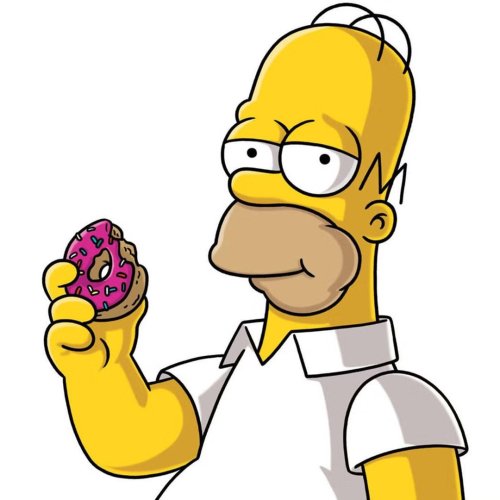
Twins Video
FanGraphs went through this exercise while using players drafted (and signed) in the last decade. For the Twins version, it was a little more critical to go further back throughout the team’s history. Spoiler alert... There haven't been that many good starting pitchers in team history.
Players were only eligible if they were drafted by the Twins after the fifth round and they had to sign with the club. As the original article said, “To illustrate how much talent is at stake, let’s build some teams of players drafted in rounds that don’t exist in this year’s draft.”
Catcher: Mitch Garver (9th Round)
Garver was the back-up catcher on the FanGraphs roster, which seems like a slight towards the reigning AL Silver Slugger winner. Their predicting system says that Garver’s 1.8 WAR is just under the 1.9 WAR projected for Tucker Barnhart. Either way, Garver is an easy pick when it comes to the best late round catcher in Twins history.
First Base: Kent Hrbek (17th Round)
The Twins got lucky by taking a hometown slugger who turned out to be one of the best hitters in team history. He was a key cog in both the team’s World Series titles and he has been a fixture in the Twin Cities since his retirement. Outside of Harmon Killebrew, Hrbek is arguably the best first baseman to ever suit up for the Twins.
Second Base: Brian Dozier (8th Round)
Dozier was a late bloomer as he didn’t debut until he was 25-years old. He became a fan favorite on some pretty bad Twins teams. From 2015-2017, he averaged 35 home runs including one season with 42 long balls. He won a Gold Glove and even made an All-Star appearance.
Third Base: Corey Koskie (26th Round)
Koskie was part of a key group of Twins that helped bring the team back from the brink of contraction. Outside of Gary Gaetti, Koskie is the next best third baseman in team history. He played seven years for the Twins and hit .280/.373/.462 with 101 home runs and 180 doubles. His defense at third was also Gold Glove caliber.
Shortstop: Jeff Reboulet (10th Round)
In five years with the Twins, Reboulet got on base over 33% of the time. He played decent defense at shortstop but having Koskie on the same side of the infield could take some pressure off him. He played on some bad Twins teams in the early 1990’s and went on to have a 12-year big league career.
Outfield: Matt Lawton (13th Round), Steve Braun (10th Round), Lyman Bostock (26th Round)
Lawton would become a two-time All Star in his career and one of those seasons was with the Twins. That year, he hit .305/.405/.460 with 13 home runs and 44 doubles, a career high. Braun and Bostock might not be as well known to younger Twins fans. Braun played for the Twins from 1971-1976 and had a .757 OPS. Bostock played four seasons at the big-league level and three of them were in Minnesota. For his career, he hit .311/.365/.427 while averaging over 25 doubles per season. From 1976-1978, only Rod Carew and Dave Parker hit for a higher batting average than Bostock. He was tragically murdered near the end of the 1978 season.
DH: Jason Kubel (12th Round)
During his minor league career, Kubel looked like he might be on a path to join Mauer and Morneau as a middle of the order bat. Baseball America ranked him as the 17th best prospect on their top-100 list entering the 2005 season. A devastating knee injury slowed his prospect status, but he went on to have a decent 10-year career as a big leaguer.
Bench: Steve Lombardozzi (9th Round), Rob Wilfong (13th Round), Danny Valencia (19th Round), Rick Dempsey (15th Round)
Lombardozzi was one of the regular contributors on the team’s run to the 1987 World Series, which happened to be his best big-league season. Wilfong’s best season were in a Twins uniform as he hit .262/.322/.360. Valencia finished third in the AL Rookie of the Year voting after posting a .799 OPS back in 2010. Dempsey was a catcher for 24 years at the big-league level and he played until he was 42-years old. He seemed like a natural choice to be the back-up catcher behind Garver.
Rotation: Brad Radke (8th), Nick Blackburn (29th), Pat Mahomes (6th), Mark Guthrie (7th), Darrell Jackson (9th)
This isn’t exactly a rotation that is destined for greatness. Brad Radke is the lone bright spot and it’s tough to consider that Nick Blackburn might be the second-best pitcher in the rotation. Luckily, the bullpen includes some of the top relief pitchers in team history, so the manager could have the starter go once through the line-up and hand the game over to the bullpen.
Bullpen: Pat Neshek (6th), Latroy Hawkins (7th), Taylor Rogers (11th), Eddie Guardado (21st), Mike Trombley (14th), AJ Achter (46th), JC Romero (21st)
Since the starters are limited, it’s nice to look at all the options available in the bullpen. Neshek, Hawkins and Romero could be used in the middle innings leading into a late inning tandem of Rogers and Guardado. As Twins fans saw last year, Rogers can be used for multiple innings with plenty of effectiveness. Sign me up for this bullpen.
How do you feel like this team would do? Leave a COMMENT and start the discussion.
MORE FROM TWINS DAILY
— Latest Twins coverage from our writers
— Recent Twins discussion in our forums
MORE FROM TWINS DAILY
— Latest Twins coverage from our writers
— Recent Twins discussion in our forums
— Follow Twins Daily via Twitter, Facebook or email
— Become a Twins Daily Caretaker






Recommended Comments
Join the conversation
You can post now and register later. If you have an account, sign in now to post with your account.
Note: Your post will require moderator approval before it will be visible.